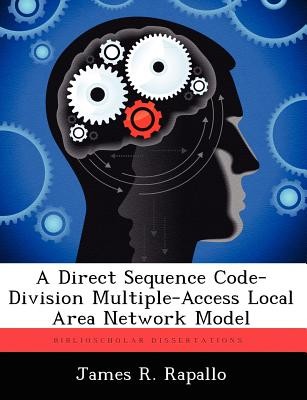
- We will send in 10–14 business days.
- Author: James R Rapallo
- Publisher: BiblioScholar
- ISBN-10: 1249586461
- ISBN-13: 9781249586463
- Format: 18.9 x 24.6 x 0.7 cm, softcover
- Language: English
- SAVE -10% with code: EXTRA
A Direct Sequence Code-Division Multiple-Access Local Area Network Model (e-book) (used book) | bookbook.eu
Reviews
Description
The United States Air Force relies heavily on computer networks for everyday operations. The medium access control (MAC) protocol currently used by most local area networks (LAN) permits a single station to access the network at a time (e.g. CSMA/CD or Ethernet). This limits network throughput to, at most, the maximum transmission rate of a single node with overhead neglected. Significant delays are observed when a LAN is overloaded by multiple users attempting to access the common medium. In CSMA/CD, collisions are detected and the data sent by the nodes involved are delayed and retransmitted at a later time. The retransmission time is determined with a binary exponential back-of algorithm. Code Division Multiple Access (CDMA) is a technique that increases channel capacity by allowing multiple signals to occupy the same bandwidth simultaneously. Each signal is spread through multiplication with a unique pseudo-random code that distinguishes it from all other signals. Upon reception, the signal of interest is despread and separated from other incoming signals by multiplying it with the same exact code. With this technique, it is possible for multiple stations to transmit simultaneously with minimal ill effects.
EXTRA 10 % discount with code: EXTRA
The promotion ends in 19d.05:56:46
The discount code is valid when purchasing from 10 €. Discounts do not stack.
- Author: James R Rapallo
- Publisher: BiblioScholar
- ISBN-10: 1249586461
- ISBN-13: 9781249586463
- Format: 18.9 x 24.6 x 0.7 cm, softcover
- Language: English English
The United States Air Force relies heavily on computer networks for everyday operations. The medium access control (MAC) protocol currently used by most local area networks (LAN) permits a single station to access the network at a time (e.g. CSMA/CD or Ethernet). This limits network throughput to, at most, the maximum transmission rate of a single node with overhead neglected. Significant delays are observed when a LAN is overloaded by multiple users attempting to access the common medium. In CSMA/CD, collisions are detected and the data sent by the nodes involved are delayed and retransmitted at a later time. The retransmission time is determined with a binary exponential back-of algorithm. Code Division Multiple Access (CDMA) is a technique that increases channel capacity by allowing multiple signals to occupy the same bandwidth simultaneously. Each signal is spread through multiplication with a unique pseudo-random code that distinguishes it from all other signals. Upon reception, the signal of interest is despread and separated from other incoming signals by multiplying it with the same exact code. With this technique, it is possible for multiple stations to transmit simultaneously with minimal ill effects.


Reviews